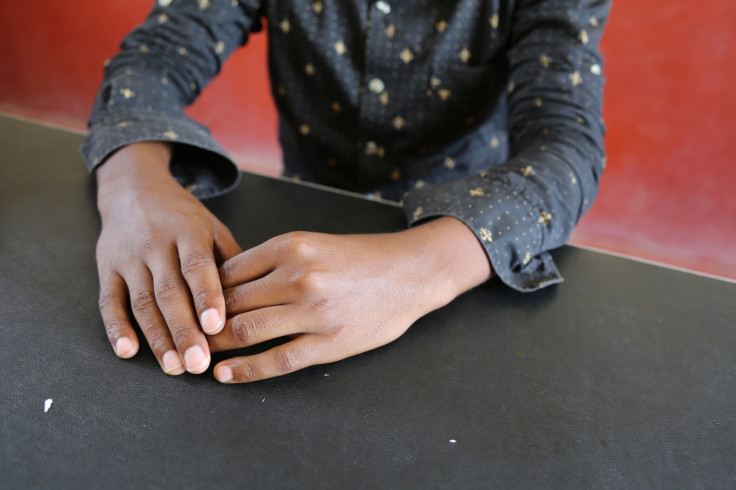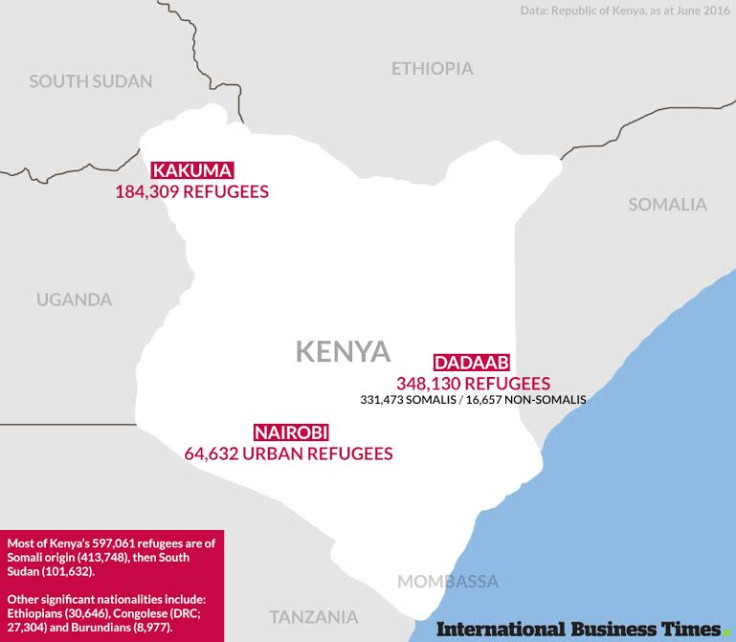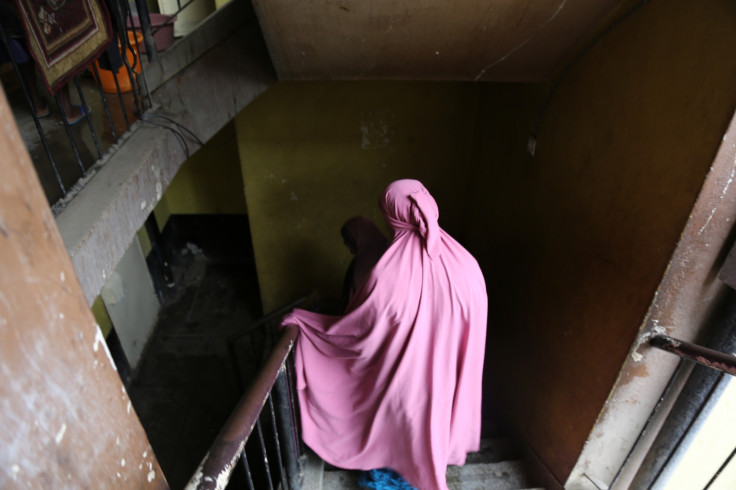Kenya refugee repatriation to Somalia may see many join al-Shabaab or face sexual abuse
EXCLUSIVE: Somali refugees tell IBTimes UK of the threats they could face if they are returned to Somalia.

Forced recruitment, gender-based violence and persecution: these are just some of the threats that Kenya's Somali refugees claim they could face if Kenya went ahead with its plans to expel them from its territory.
For more than 20 years, Kenya has been home to generations of Somalis who have fled their war-torn country and, with the assistance of the international community, their host country was able to give them three main options: local integration, resettlement or repatriation.
In the latter case, Raouf Mazou, the United Nations refugee agency (UNHCR) representative to Kenya, confirmed up to 120,000 people had voluntarily returned to Somalia's 'safe pockets' in the past five years. More recently, the now-defunct Department of Refugee Affairs said that 10,000 refugees had been assisted to return home while another 50,000 had spontaneously returned without any assistance between February and April 2016.
However, the authorities' plans to reduce the population of the Dadaab refugee camp by half via voluntary and expected forced repatriations of 150,000 Somali refugees by the end of the year (see What is Kenya's plan for refugees? boxout below) would put Somali men and woman at risk of serious, and at times deadly, threats.

Forced recruitment by al-Shabaab
In war-torn Somalia, the majority of male refugees claim they would become a target for both the al-Shabaab Islamic extremist group linked to al-Qaida, which has been waging a deadly insurgency against the Somalian government, and government security forces.
"When you go back to Somalia, you'll become suspected by the government and the al-Shabaab group because you come back from Kenya. They will ask: 'Is he a spy for the government or for al-Shabaab?'" Mohamed, a 23-year-old refugee living in one of Kenya's refugee camp, exclusively told IBTimes UK in Kakuma.
What is Kenya's plan for refugees?
- Refugee camp shutdown:
In May, Kenya's government's announced its decision to close Dadaab, the largest refugee camp in the world home to between 330,000 and 350,000 refugees of which over 95% are Somalis. It described the camps as an economic burden and a "breeding ground" for terrorism.
- 'Directive' against urban refugees:
In June, however, it also disclosed a 'directive' effectively uprooting Somali - and other - urban refugees. During the UNHCR World Refugee Day event on 20 June, a spokesman for the Kenyan Interior Ministry announced Kenya will no longer host refugees.
Joseph Nkaissery told urban refugees the government "further ask(s) all refugees residing in urban centers to move to their designated camps to avoid conflicts with the law," despite there being no official law banning refugees from residing in urban areas.
The direct threat given toward refugees in the capital Nairobi - many of whom have resided in urban areas for years and have done all they can to obtain the necessary documents to do so - comes amid increasing reports of harassment, arbitrary arrest, extortion following the directive.

The young Somali left Somalia's insecurity in 2009. He had been living at neighbours' for three years following the death of both his parents in 2006. "After life had became very difficult, with explosions and war breaking there, I fled to Dadaab, then to Kakuma," Mohamed, who spoke under condition of anonymity, explained.
"Someone from a refugee camp cannot become a terrorist: these people are effectively running away from the terrorists, and they are just looking for peace, security, prosperity and opportunities for their kids to have higher education," he said.
While he enjoyed secondary-school studies offered in the camp's vicinity and learned Swahili and English, Mohamed now dreads leaving, thus having to join either Somalia's government forces or al-Shabaab. "You can't be unaffiliated when you return," he said.
One of his friends, who we will call Aden, explained: "Because we come from Dadaab or Kakuma, al-Shabaab will hunt you or shoot you, and because we fled Somalia, the government sees us as traitors.
So the reason why people are joining al-Shabaab is simple: if you join the government, you are hunted by al-Shabaab, and they are more dangerous than the government. So you join them in order to save your life."
How would the fighting forces identify either Aden or Mohamed as refugees? "Think about all the children who were born in Kenya, who don't speak Somali or Arabic perfectly, but speak all other languages. We use expressions here that people in Somalia don't use," Mohamed adds.
Concerns for well-being of girls and women
For women too, being seen to be 'too Western' – having grown up in Kenya, educated in a Western schooling system, and become fluent English and Swahili-speakers – is a major worry. "When you lived here and you are educated, Al-Shahaab think you are not a Muslim and slaughter you," a young Somali refugee, Amina, told IBTimes UK in Eastleigh, the predominantly Somali district in Nairobi.
For these women, who face returning to Somalia's internally displaced persons (IDP) camps or other informal settlements because their property and homes have been taken over or destroyed, there is an increased risk of sexual violence, both from men known to the survivor and by armed men.

According to a Legal Action Worldwide (LAW)'s report seen by IBTimes UK, figures collected by the UN and other agencies indicate that 30 to 70% of the perpetrators are armed men in uniform and it is significantly more prevalent in IDP communities.
Girls such as Amina and her sisters, who face landing in an IDP camp upon arrival in Somalia run the risk of being part of another shocking statistic: in 2015, 74% of sexual violence survivors in Mogadishu were persons residing in IDP camps within the city, according to statistics collected by organisations using the Gender-Based Violence Information Management System (GVBIMS) managed by the UN GBV working group.
"The risk in the IDP camps is increased if they are from a minority clan in the area they are returning to and for female headed household due to lack of traditional protection structures offered by the clan," " Antonia Mulvey, the legal organisation's Nairobi-based executive director, told IBTimes UK.
How can returning refugees be protected?
Specific measures should be put in place to protect the rights of Somali returnees at risk of sexual violence, Legal Action Worldwide said.Governments and agencies should ensure that:
- The return is voluntary
- All information, including about the risk of sexual violence, is made available to the returnee
Once people do return, the Somali government should put systems in place to enable accountability and access to justice. It should:
- Work with the international community to establish independent complaints mechanisms in camps and settlements
- Improve accountability mechanisms within the security forces including civilian oversight of the police and better investigation processes within AMISOM
- Work to enhance the capacity of women lawyers and legal aid providers
© Copyright IBTimes 2025. All rights reserved.






















